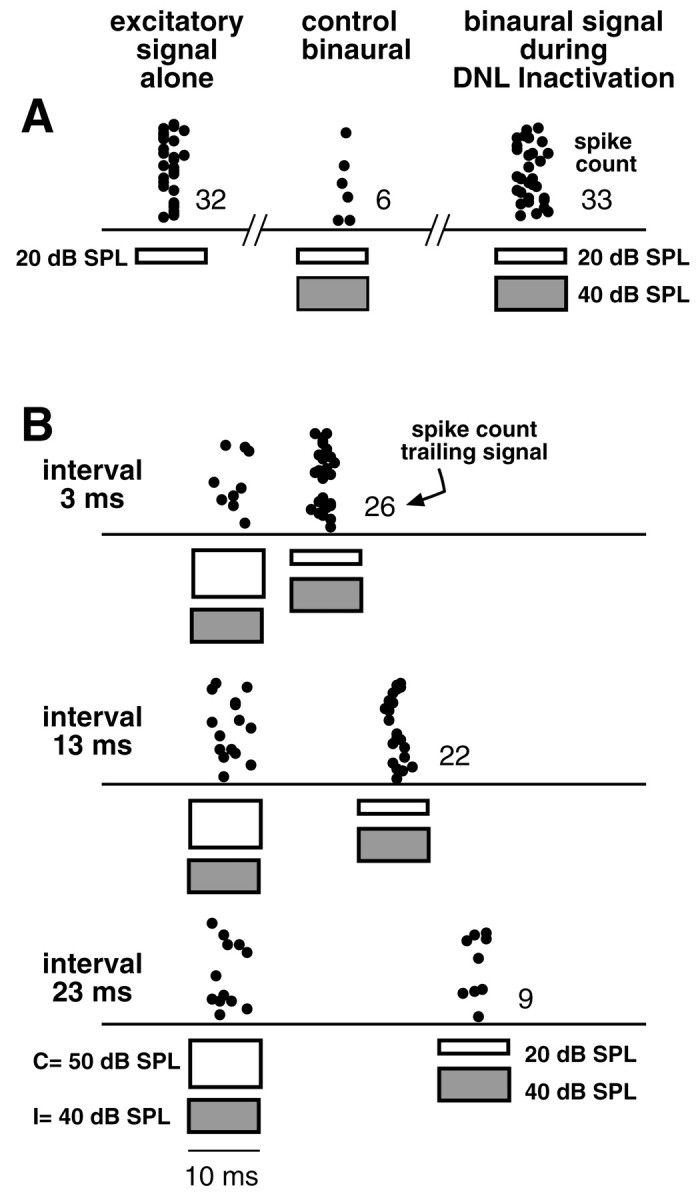Fig. 15.

DNLL inactivation mimicked the relief of inhibition produced by an initial binaural signal. All signals were 10 msec FMs that swept from 40 to 20 kHz. Signals presented to the ear contralateral to the ICc (the excitatory ear) are shown asunfilled bars, whereas signals presented to the ear ipsilateral to the ICc (the inhibitory ear) are shown as hatched bars. A, Control responses evoked without a prepulse. Tone bursts presented to only the contralateral (excitatory) ear at 20 dB SPL evoked 32 spikes. A binaural signal, having the same contralateral intensity (20 dB SPL) but an ipsilateral intensity of 40 dB SPL, evoked only six discharges, an 82% suppression. When the DNLL was inactivated, the same binaural signal evoked no suppression. Thus inactivating the DNLL relieved 100% of the ipsilaterally evoked inhibition. B, Relief from inhibition afforded by a binaural FM prepulse. The IID of the prepulse was +10 dB, and the excitatory ear was more intense. The trailing binaural signal evoked 26 spikes when it followed the prepulse by 3.0 msec (a suppression of 19%). Thus the prepulse relieved ∼81% of the ipsilaterally evoked inhibition. Slightly less relief was achieved when the interval was lengthened to 13 msec, and relief was over when the interval was 23 msec.
